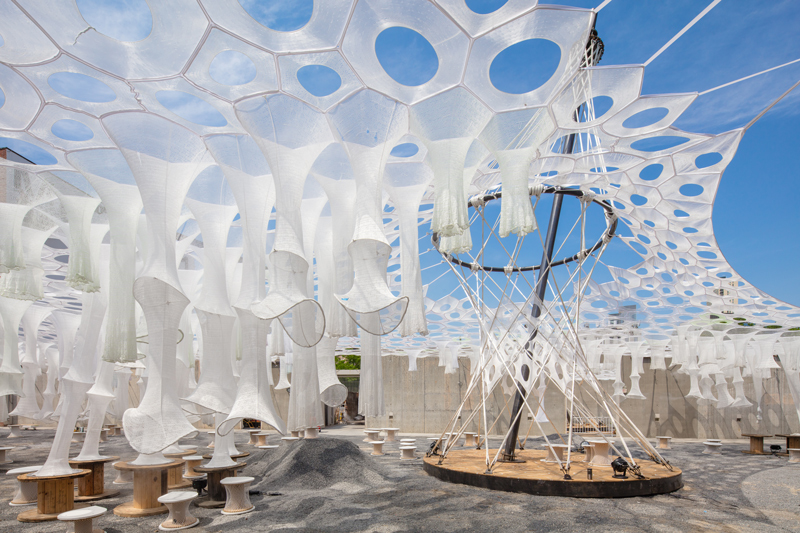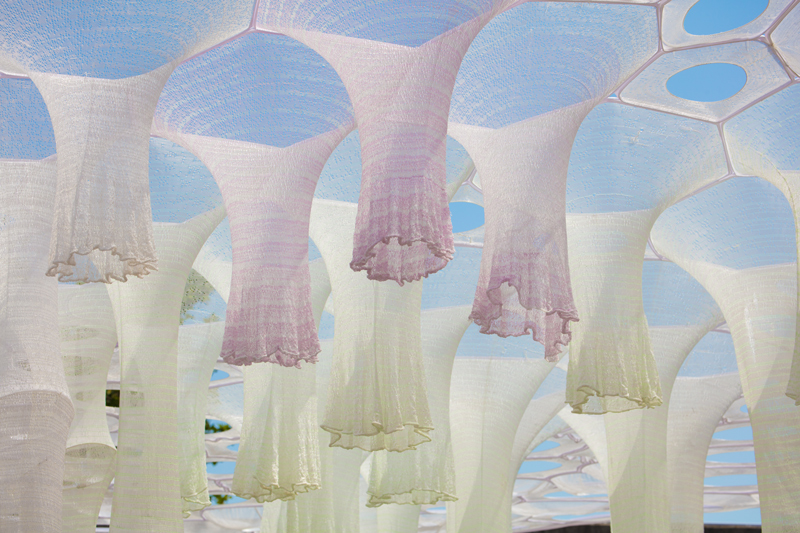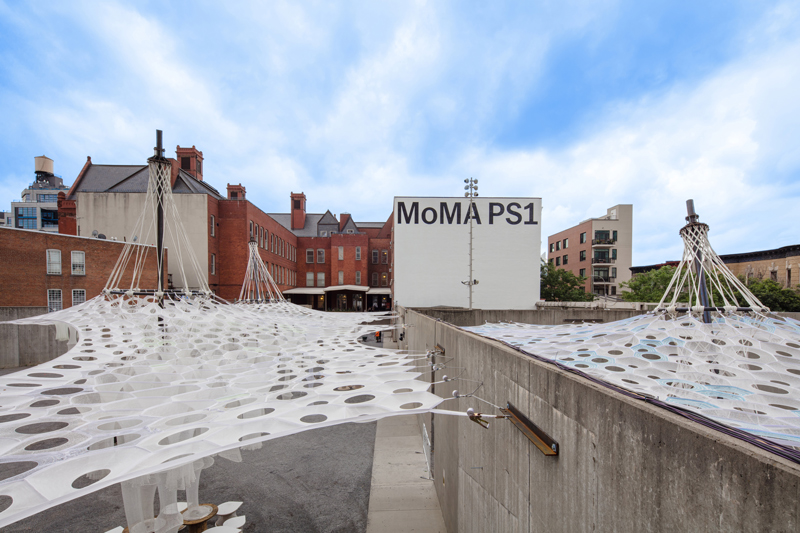The use of textiles to create living spaces is a long-practiced tradition, combining architecture, practicality, and art. In the recent past, textiles have experienced renewed interest in this area.
“This, therefore, created a trend in so-called soft architecture because among other things, the concepts of future living are meant to solve current problems on one hand, and on the other, create new opportunities,” Groz-Beckert, a leading provider of industrial machine needles, precision parts and fine tools, reports.
Jenny Sabin, with her Lumen project, has won this year’s Young Architects Program, organised by the Museum of Modern Art of New York (MoMA) in cooperation with MoMA PS1, a pioneering institution for contemporary art in Queens, New York City.
Lumen – knitted light
The designer describes her work as knitted light because it consists almost entirely of textiles that illuminate under certain conditions. Both recycled textiles, as well as specially created knitted fabrics from high-tech yarns, were used. The namesake light is created by the high-tech responsive yarns used: a photoluminescent yarn that absorbs light and UV radiation all day and then emits it to generate illumination, and a solar-active yarn that changes colour when exposed to sunlight.
A canopy was knitted with both of these fabrics, that is held from the three walls of the inner courtyard, and three steel towers that are about six meters tall and filled with water. The water contained in the towers is distributed through a misting mechanism hidden in the “textile stalactites” and triggered by close proximity of visitors.

The impressive design was originally developed by computer, the digital construction plans were designed in studio, and then implemented via simulations and sketches. Then the individual cells and stalactite shapes were created using flat knitting machines.
Young Architects Program
The Museum of Modern Art of New York (MoMA) started the Young Architects Program in order to give talented upcoming architects the opportunity to design and present innovative projects. Every year, a few select architects are tasked with creating an original design for a temporary installation outside the MoMA PS1 on Long Island that provides visitors with shade, seating, relaxation, and water during the summer months and that serves as a venue for concerts and other events of MoMA PS1.
Jenny Sabin is the owner of the architect firm Jenny Sabin Studio and manager of the Sabin Design Lab, an organisation within the architectural programme at Cornell University, Ithaca, NY, where she teaches as an instructor on the topics of design and developing technologies.

Her award-winning project Lumen is the newest in an entire series of designs that illuminate the intersection between architecture and science. She has already created similar installations from knitted materials in the past: In 2012, in cooperation with Nike to present their Flyknit collection, and a pavilion ordered by New York City called PolyThread.
Knitted fabrics in art and architecture
“Biomimicry, the imitation of processes and designs from nature, plays a large role in the concept of future living. Issues such as sustainability and environmental awareness can be integrated into modern life in this manner. This demand has led to the use of textiles in construction becoming a specialised field that requires a great deal of technical expertise,” Groz-Beckert reports.

“In the past, weaving was the standard process to create textiles used for shading or accommodation purposes. Today, knitting plays a larger and larger role because it allows a higher level of detail and more flexibility in the end product. The textile can be knitted directly into the desired shape, while considering necessary functionality in the pattern at the same time, without requiring additional work. The combination of specific yarns with very different properties and the use of various knitting patterns creates textiles that meet functionality, durability, and aesthetic demands, that imitate nature, or that find recognition in the art world as well.”
“Groz-Beckert also offers its customers the opportunity to cooperate in developing and implementing innovative ideas, with the company’s Technology and Development Center (TEZ) possessing the necessary infrastructure for this.”

Subscribe To Our Newsletter
Join our mailing list to receive the latest news and updates from our team.














